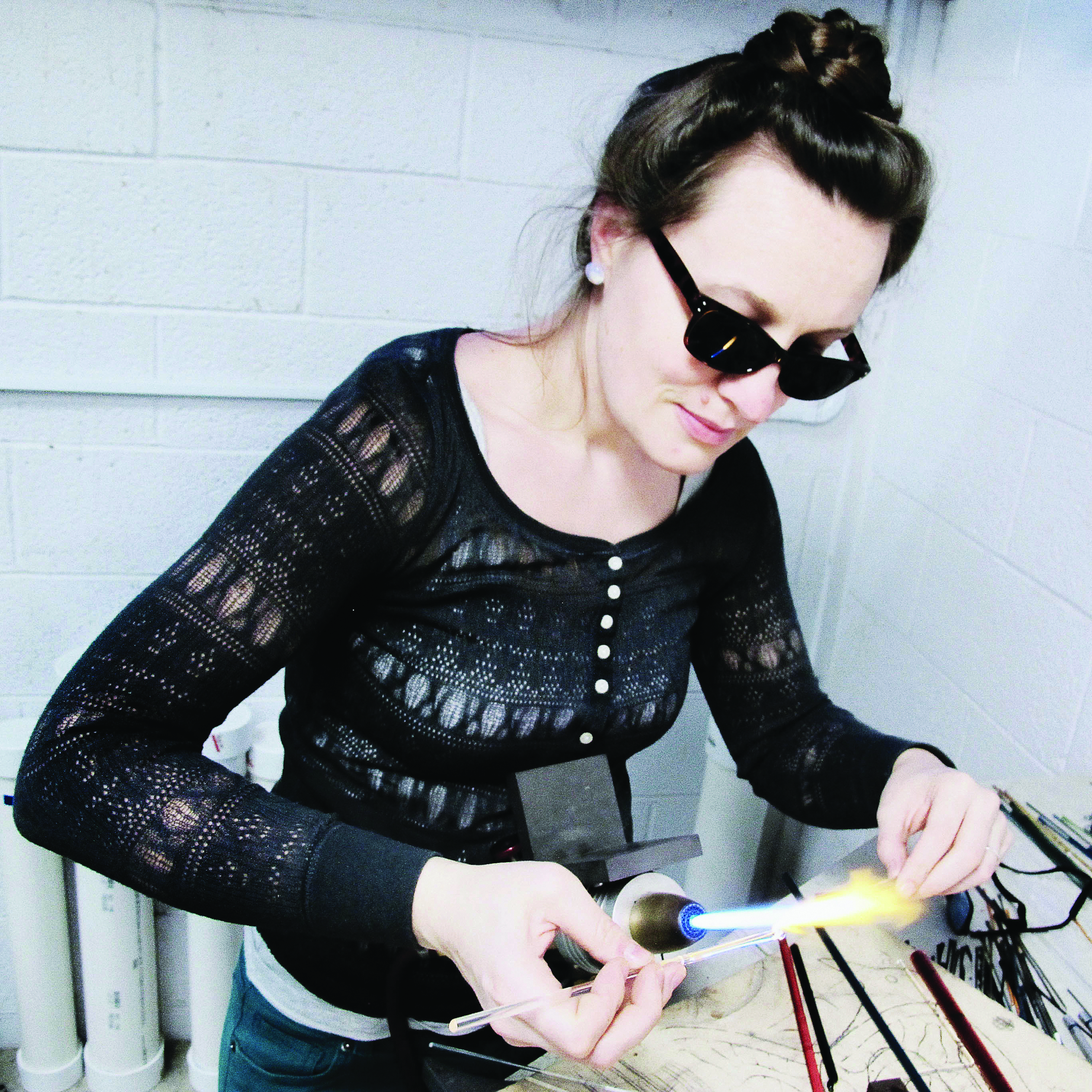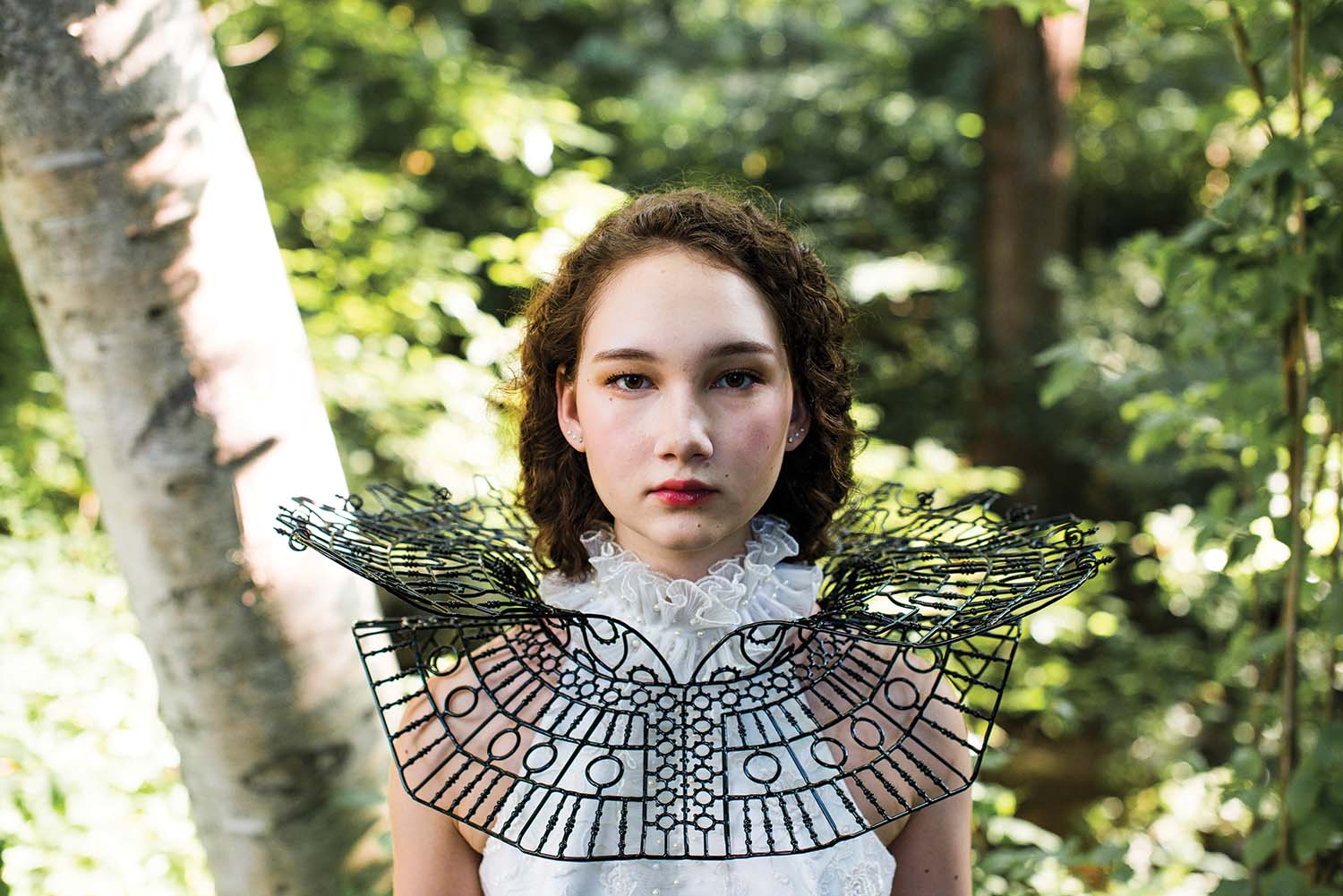
(Photo provided by the artist)
Kit Paulson worked as a furnace glassblower before transitioning into meticulously intricate glass sculpture created with a flame torch. She’s taught her techniques at the Corning Museum of Glass and locally at Penland School of Crafts, where she’s about to embark on a three-year residency (she recently completed her MFA at Southern Illinois University). Paulson has sculpted bits of glass into the shape of everything from optical devices and flowers to animal skulls and a finely laced handkerchief.

Model: Aislin Freya Pax
Location: Botanical Gardens at Asheville
Photo by Karin Strickland
Why glass?
It’s a mysterious material. It doesn’t behave like other materials, and it’s a very difficult material. But a lot of people get into their craft because it’s so difficult that it never gets old.
Difficult how?
Initially, with molten glass, there are many operations where you only get one shot, and you’re going to mess it up. You just have to jump in, without practicing the way you can with other materials. But you’re building muscle memory that’s necessary to one day execute the moves without messing up.
How did you start working with glass?
I was working on my BFA at Alfred University, and didn’t really know what I wanted to do. I tried out glass and was overwhelmed and terrified. Then my horror turned into fascination.
You sculpt with fire …
Yes, lots of fire, and it’s 2,100 degrees Fahrenheit or hotter. Most of what I do is with a very tiny jeweler’s torch. The flame is a third the size of my pinky fingernail. I can isolate smaller areas instead of keeping the whole thing hot while I work. I have a variety of itty-bitty tools and tiny little tweezers. I have a whole set of dental tools.

Photo by Karin Strickland
Do you work incrementally?
I usually do piecework and then build those pieces into larger things. There’s a lot of prep work. I use “bridging,” [where] you build a glass scaffold as an outer structure to hold the pieces together, and later it gets removed.
There’s a lot of drama associated with glasswork. What’s yours?
I wear a special type of glasses that cut out the sodium flare — the orange halo around molten glass that can damage your retina.
So it’s dangerous and time-consuming. How do you find time to arrive at themes?
It’s a process of collecting, of moving through the world and observing and filing information away until I make visual or conceptual connections.
Then what?
I do a series of sketches to arrive at a general overall plan. I make drawing to scale. I transfer that onto a kiln shelf, a piece of ceramic that can withstand high temperatures. I work by looking down at the drawing, through the piece I’m making. Last year I did a big peacock-shaped headdress and that took nearly a year to complete.

Photo by Karin Strickland
Some of your pieces like headdresses look functional, but seem too fragile to actually be functional.
That’s a gift of the material. It has a built-in contradiction.
Kit Paulson, Penland, kitpaulsonglass.com and on Instagram: @kitpaulson. Selected works are on display through August 25 at the “Reflections” group show at Momentum Gallery (24 N. Lexington Ave. in Asheville), and through September 16 at the “Alchemy” contemporary-glass exhibit at Penland School of Crafts Gallery. A reception for “Alchemy” happens Saturday, August 4, 4:30-6:30pm. See momentumgallery.com and penland.org for more information.